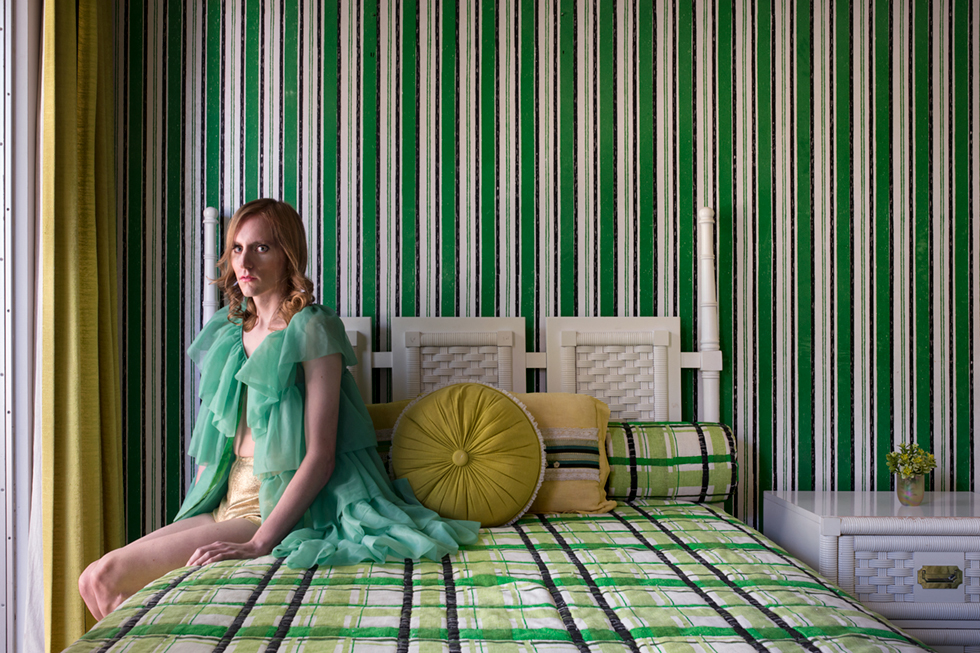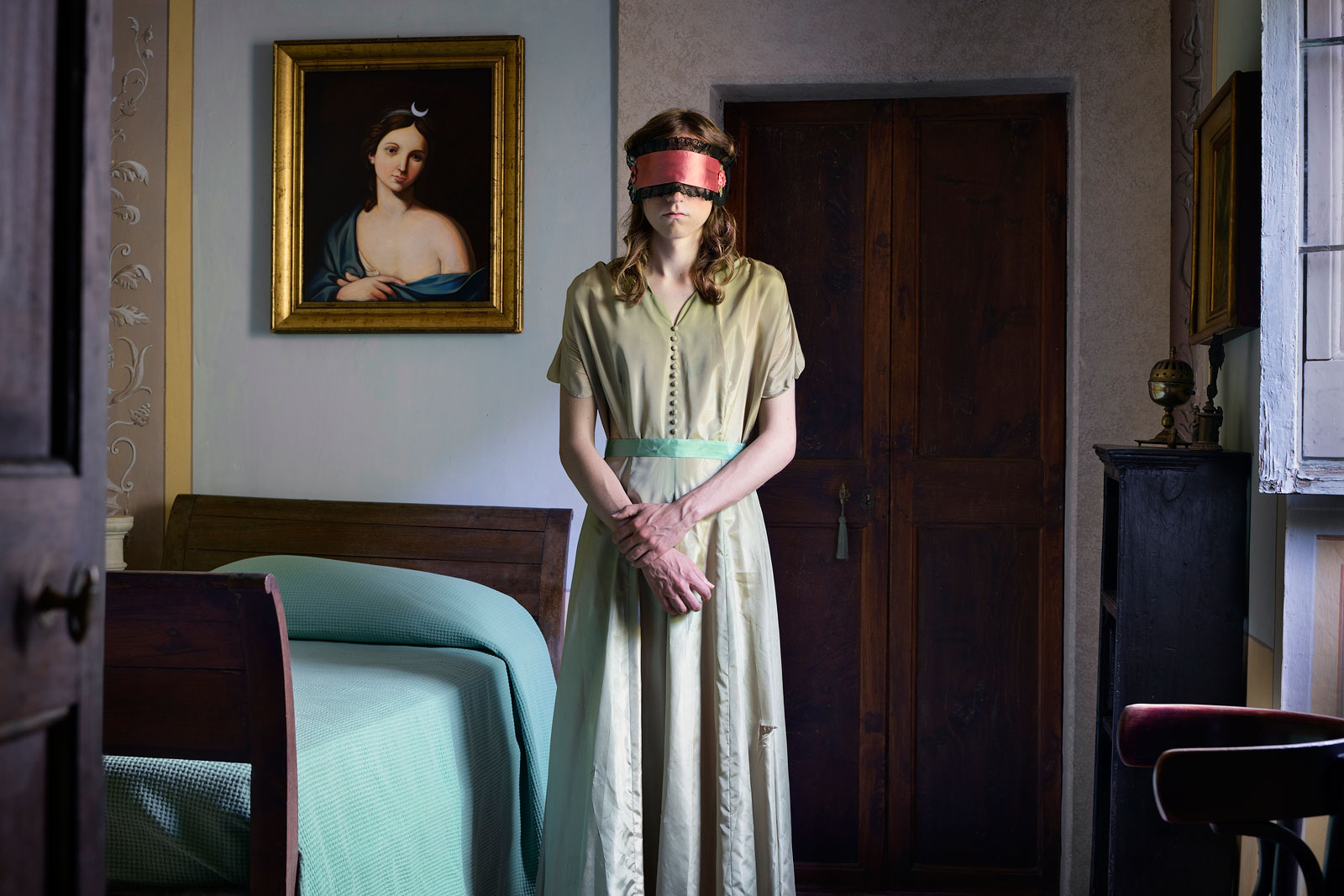Lissa Rivera’s “Beautiful Boy” Exhibition at ClampArt
Gender identity explored through a deeply personal relationship made public in captivating imagery

We exist in a time when conversation around gender identity slowly shifts into greater public consciousness. In no way has this been adequate enough to protect those who remain isolated or in danger, but some progress has occurred. And while every bold political and cultural stroke opens doors to acceptance and awareness, sometimes more personal, private acts lead to comfort. This is what photographer Lissa Rivera has captured in her exquisite exhibition, “Beautiful Boy,” at ClampArt in New York. Rivera has spent three years capturing images of her romantic partner BJ Lillis—who confided in her on a train ride that he (Lillis identifies as genderqueer and accepts all pronouns) privately wore women’s clothing in college but felt he couldn’t any longer, in the professional world. Through Rivera’s deft vision and Lillis’ growing levels of comfort, they traveled the world—including locations that were valuable to Lillis’ youth—and staged highly-structured, colorful scenes addressing femininity and the power of the female gaze. Over two dozen works are on display and they make for a compelling, sometimes fantastical narrative experience on many levels.
The world is absurd and gender is a construct. Why can’t we restructure things into our own fantasy?
Rivera often sets Lillis in geometric or formally structured scenes that make reference to decades’ worth of iconography, but they are clearly the product of their imagination. “The world is absurd and gender is a construct. Why can’t we restructure things into our own fantasy?” Rivera explains regarding their motivation.

“So much of life is spent in one’s mind—in these fantasy situations and feelings. But that’s a type of reality, too. People live in their heads. We knew that this was true, and understood that we should build our own worlds.” They collaged various references and ideas without restricting themselves to genre or decade—calling emotion, attire and color from the ’30s to the ’90s in the same visual.

“I’m very attracted to color, and how color pertains to femininity in so many ways,”
Rivera continues. “Natalie Kalmus, the wife of the person who founded Technicolor was a consultant on all the color films until 1949. It was in her contract with the studios. She decided the colors for costumes and sets when color was the strongest and most important in film,” she continues on inspiration. “And with early Disney films, women were in the ink and paint department. They would color everything.” She notes that even women who were relegated to the home could control their domestic sphere—and attention when they stepped out of it—through use of color in decor and dress. Further, “there’s a red pertaining to the ’30s and a red pertaining to the ’90s and every other decade, as interests cycle in and out.”

Rivera and Lillis would sort through stacks of outdated photo books and watch classic films and Biography channel documentaries. Rivera also spent substantial time searching for destinations that matched their wishes. What began in her kitchen extended to an outdated motel to a California mansion. All of her work is shot digitally for two reasons: she takes so many images and only uses natural light. “We shoot on location every daylight hour, beginning as the sun rises and finishing when the sun sets. At home, a shoot lasts as long as the daylight is good.” She narrowed the year’s worth of work down based on what they represented. “I wanted pieces that made different points,” she says, “I also wanted to work with color, starting the show with works that were more saturated and making my way toward more neutral.”

Both Rivera and Lillis are open to continuing the series. “It doesn’t feel stale,” she says, “We do not know what we will encounter. It’s not tied to documenting ourselves in a realistic way, so a lot can be done.” She enjoys the beauty of her partner and basks in the bravery required for such exploration. And, she notes, her method of photography is quite distinct. “I look at how I want to go inside of the image. We use photography as a looking glass to walk inside the world.” And in doing so, the artist and muse have created worlds that many will benefit from entering.

“Beautiful Boy” runs now through 15 July at ClampArt, 247 West 29th Street, New York.
Images courtesy of ClampArt












